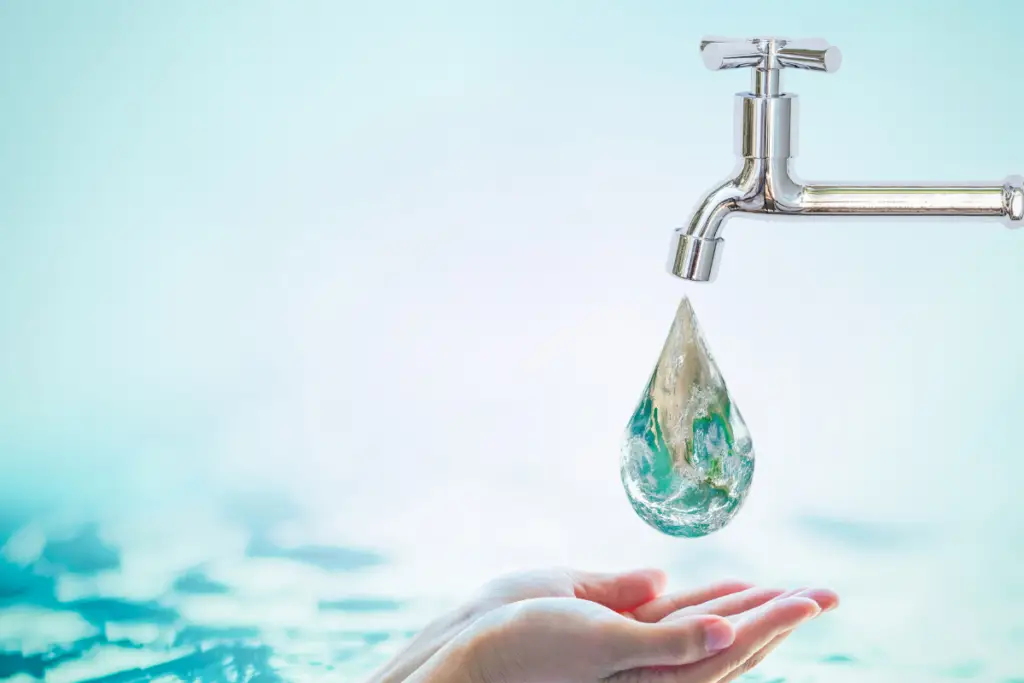The five great lakes, Huron, Ontario, Michigan, Erie, and Superior, along with Lake Mead, are the biggest surface water sources on earth. Although we seem to have plenty of water, it is sobering to realize that only 3 percent of the water on Earth is fresh water, of which only 1 percent is available for human consumption.
According to the United Nations, 1.1 billion people lack access to clean water and climate change is making the situation worse. By 2025, an estimated 2.8 billion people on Earth will be experiencing “freshwater stress” or “scarcity.” In North America, the USA, and Canada there are few troublesome areas in and around the Great Lakes and Lake Mead.
Trouble spots indicate a change in chemical, physical, or biological integrity, including pollution, harmed wildlife communities, and other environmental degradation. Rain and snow replenish only a small fraction of the water we use each year. Due to the imbalance, both surface and underground sources have been significantly reduced. If we continue to pollute and overuse our clean and affordable water sources, we will run out of water.
Prepare drinking water: Keep a pitcher in your fridge so you don’t have to leave the tap running to drink a glass of fresh water.
Full Load – Use only full loads of clothing and dishes. If possible, choose the shortest program with a low water level. If you buy a new device, upgrade to a water-saving model. (A front-loading washing machine is a good example.)
Green car wash: Try a car wash that recycles water. If you wash your car yourself, use a bucket and sponge and rinse sparingly. Try a car without water.
Schedule your sprinklers: Water your garden in the evening, during the night, or early morning to minimize evaporation.
Flush carefully: Switch to low-flow or dual flush toilets.
Take short showers – Replace existing shower heads with the lowest flow product you can find. You can further reduce water flow with showerheads with flow adjustment. Consider using a timer to keep your showers as short as possible. Also, try turning off the water while you shave. or foam.
Finding and fixing leaks: The Water Department of the EPA estimates that the average household loses 14 percent of its water due to drips and leaks.
Stop the flow: Install flow-restricting aerators in all faucets. This simple step saves up to four gallons per minute per faucet.
Collecting and releasing water: If you have houseplants, water them with the water leftover from drinking, cooking, and showering. Place a jug of water near your sink or bathtub to catch any unused water that comes out of the faucet.
Use native plants: This will cut down significantly on watering requirements and, in the process, provide much-needed food and refuge to local wildlife.
QUICK TIP; QUICK TIP; How to Check for Leaks: Check your water meter when no one is using water in the house. If it moves, there is a leak. A working toilet can waste two gallons of water every minute. To check the toilet, add food coloring to the tank. Leave it for ten minutes. Then look inside.If there is paint, there is a leak. The most likely culprit is a worn flapper valve, which can be easily replaced.

Erzsebet Frey (Eli Frey) is an ecologist and online entrepreneur with a Master of Science in Ecology from the University of Belgrade. Originally from Serbia, she has lived in Sri Lanka since 2017. Eli has worked internationally in countries like Oman, Brazil, Germany, and Sri Lanka. In 2018, she expanded into SEO and blogging, completing courses from UC Davis and Edinburgh. Eli has founded multiple websites focused on biology, ecology, environmental science, sustainable and simple living, and outdoor activities. She enjoys creating nature and simple living videos on YouTube and participates in speleology, diving, and hiking.

